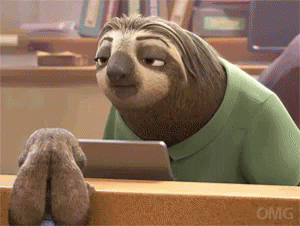Summarizing with Sloths
Rationale: The goal of this project is for the student can comprehend what they are reading so they can learn. Once students learn to read correctly and fluently, students can read at different grade levels. Moving forward in learning is to read comprehensively in order to understand. One of the key components in learning is understanding how to summarize. Summarizing teaches us to learn the important parts of the information that we are learning.
Materials:
-
poster with how to summarize steps
-
poster with paragraph three
-
highlights for teacher and students
-
notebook paper
-
pencils
-
Copies of the National Geographic Kids article about Sloths
-
Summarization checklist
-
Summarization quiz
Procedures:
-
Explain why we summarize. Say: When we read we summarize the information that we are reading. We do not have to remember every detail that we are reading. We are going to pick out the important information in the book that we are reading. Today we are going to practice with our National Geographic article about sloths.
-
Say: when we summarize we are going to delete the unimportant information. We delete the “fluff” so we can get the most out of our information. So while we are reading through this article I want y’all to pick out the most important information and to delete the “fluff”.
-
Say: We are about to practice how to summarize on a paragraph from National Geographic. What do you know about otters already? Do you know where they live? How big they get? What do y’all want to know about otters?
-
Say: Before we begin I want to talk about some vocabulary that you might see in this article. The first word is tropical. Who can tell me what you think tropical means? (calls on hands that are being raised). Tropical in this case means that it is warm and in a forest. Another word is species. Species means that it is a group of animals that is living together.
-
Shows students the summarization poster and passes out paper and highlighters along with the article.
Here is a paragraph with an article that we are reading from with otters. I am going to read you the first paragraph and show you how I would summarize this paragraph. I want you to follow along while I read.
“There are two main species of sloth, identified by whether they have two or three claws on their front feet. The two species are quite similar in appearance, with roundish heads, sad-looking eyes, tiny ears, and stubby tails. Two-toed sloths are slightly bigger and tend to spend more time hanging upside-down than their three-toed cousins, who will often sit upright in the fork of a tree branch. Three-toed sloths have facial coloring that makes them look like they're always smiling. They also have two extra neck vertebrae that allow them to turn their heads almost all the way around!”
Say: Now that we read the paragraph I want to show you how I would summarize it. We are going to cross out the unimportant information and highlight the important information.
“There are two main species of sloth, identified by whether they have two or three claws on their front feet. The two species are quite similar in appearance, with roundish heads, sad-looking eyes, tiny ears, and stubby tails. Two-toed sloths are slightly bigger and tend to spend more time hanging upside-down than their three-toed cousins, who will often sit upright in the fork of a tree branch. Three-toed sloths have facial coloring that makes them look like they're always smiling. They also have two extra neck vertebrae that allow them to turn their heads almost all the way around”
I highlighted the first two sentences because it is important to know the two species and the characteristics about the two species. I crossed out the last part of the paragraph because it is fluff and not important information.
-
Now from that information that we highlighted I am going to form a topic sentence or a summarization of the sentences. Topic sentence written on paper: There are two types of sloths that are similar with round heads, sad looking eyes, tiny ears, and stubby tails.
-
Passes out pieces of paper to the students along with the article. Say: “Now I want y’all to summarize the rest of the article. I want you to do it just like I did. Go through the article highlight with your highlighter the important parts and cross out the fluff. At the end I want you to create a topic sentence for each of the sentences. We will have a small quiz at the end once everyone is done.”
-
Assessment:
______ Collected important information
______ Ignored trivia and examples in summary
______ Significantly reduced the text from the original
______ Sentences brought ideas together from each paragraph
______ Sentences organized coherently into essay form
Quiz:
-
How many hours a day do sloths sleep?
-
Where do sloths live?
-
How many species of sloths are there?
-
Why do scientist think sloths are slow?
-
How many times a week do sloths come down from the tree?
References:
Article: https://kids.nationalgeographic.com/animals/sloth/#sloth-beach-upside-down.jpg
Sloth image: https://metrouk2.files.wordpress.com/2016/10/ad_223315391.jpg?quality=80&strip=all&strip=all
